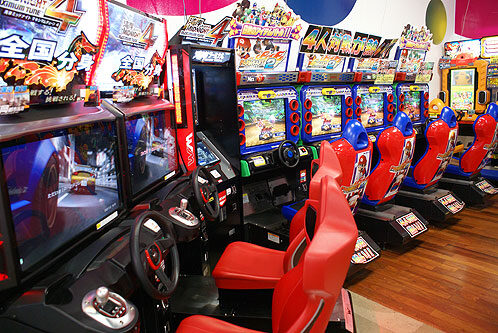Rainbow Bridge is one of Tokyo’s most iconic landmarks, spanning the northern Tokyo Bay between Shibaura Pier and the Odaiba waterfront development in Minato, Tokyo, Japan. The suspension bridge is a breathtaking sight to behold, especially at night when it is illuminated by colorful lights that create a stunning rainbow effect.
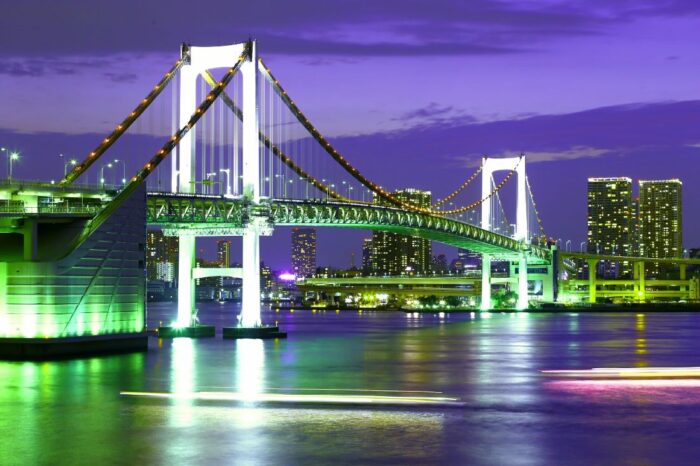
The bridge was completed in 1993 and was named Tōkyō Kō Renrakukyō in Japanese, which translates to Tokyo Port Connector Bridge. It was built to replace the aging Tokyo Port Tunnel and to provide a more efficient way to transport goods and people between the two sides of the bay.
Aside from its practical purpose, the Rainbow Bridge has also become a symbol of Tokyo and is a popular tourist attraction.
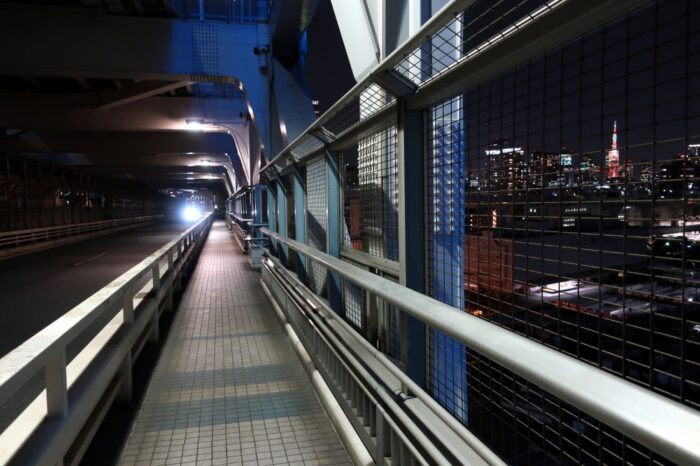
Visitors can walk or bike across the pedestrian path on the bridge and enjoy stunning views of the bay and the city skyline. In this article, we will explore the history, design, and attractions surrounding the Rainbow Bridge in Tokyo.
History of The Rainbow Bridge

Rainbow Bridge is an iconic suspension bridge that connects Shibaura Pier and the Odaiba waterfront area. The bridge was completed in 1993 and has since become one of the most recognizable landmarks in Tokyo. The bridge spans 798 meters and has two decks, one for cars and the other for pedestrians and cyclists.
The bridge’s name comes from its unique design, which features an array of lights that illuminate the bridge at night, creating a rainbow-like effect. The lights change color depending on the season and the time of day, making the bridge a popular spot for photography and sightseeing.

The construction of Rainbow Bridge was a massive undertaking that required the use of advanced engineering techniques. The bridge was built using the latest technology at the time, including computer-aided design and simulation software. The bridge’s design was also carefully considered to ensure that it would be able to withstand earthquakes and typhoons, which are common in the Tokyo area.
Since its completion, Rainbow Bridge has become an important part of Tokyo’s skyline and a symbol of the city’s modernity and innovation. The bridge is also an important transportation link, providing a direct connection between central Tokyo and the Odaiba waterfront area, which is home to a variety of shops, restaurants, and entertainment venues.
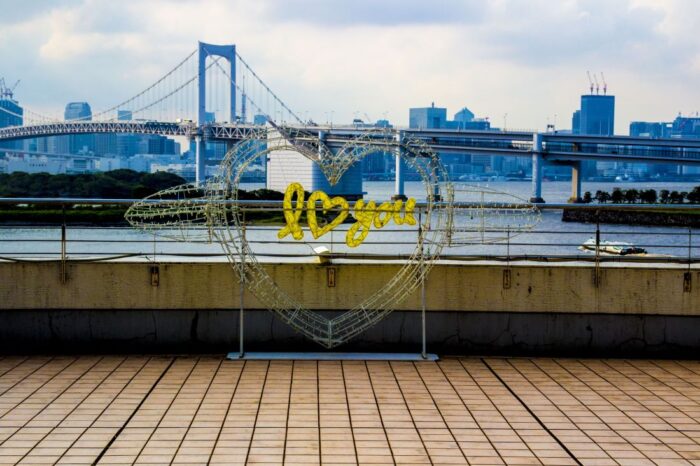
You can walk or cycle across the bridge and enjoy stunning views of Tokyo Bay and the city skyline. The bridge is also a popular spot for fireworks displays and other events, making it a must-visit attraction for anyone visiting Tokyo.
Design and Construction
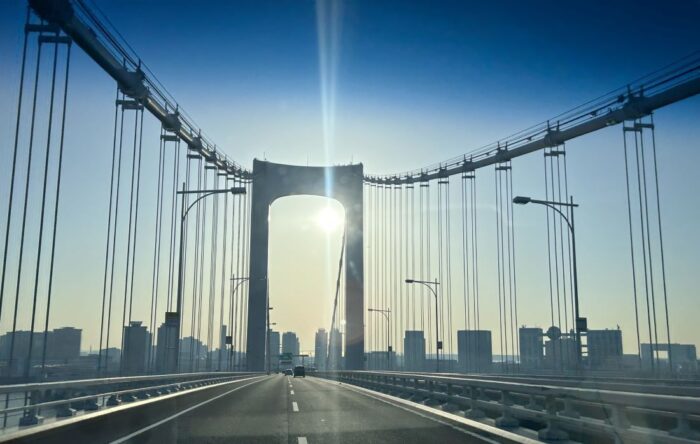
The Rainbow Bridge in Tokyo is a stunning piece of engineering that connects the Odaiba waterfront area to the rest of Tokyo. The bridge was designed and constructed by Kawasaki Heavy Industries, and the project began in 1987, taking six years to complete.
One of the most impressive features of the Rainbow Bridge is its height. The bridge stands at 798 meters long and 126 meters tall, making it one of the tallest bridges in the world. It was designed to allow ships to pass underneath, so the height was a crucial factor in the design process.

The bridge was constructed using a combination of steel and concrete, with the main towers made from steel and the bridge deck made from concrete. The steel cables that support the bridge are also a key feature of the design, giving the bridge its distinctive look.
During the construction process, safety was a top priority, and the builders used a range of innovative techniques to ensure the safety of the workers. For example, the main towers were constructed using a technique called “slipforming”, where the towers were built up layer by layer using a sliding formwork. This allowed the workers to build the towers quickly and safely, without the need for scaffolding.
Illumination and Colors

One of the most spectacular things about Rainbow Bridge is its illumination. At night, the bridge is lit up with an array of colorful lights that change every few minutes, creating a mesmerizing display. The colors of the lights change in accordance with the seasons and special events, making each visit a unique experience.
The illumination of Rainbow Bridge is not just for aesthetic purposes. The bridge is also an important landmark for ships navigating Tokyo Bay. The colors of the lights indicate the weather conditions, helping ships to stay safe and avoid accidents.

For those who want to see the bridge’s illumination up close, there are a few options. One is to take a cruise along Tokyo Bay, which provides a stunning view of the bridge from the water. Another option is to walk across the bridge at night, which is a popular activity among locals and tourists alike.
Transportation and Access
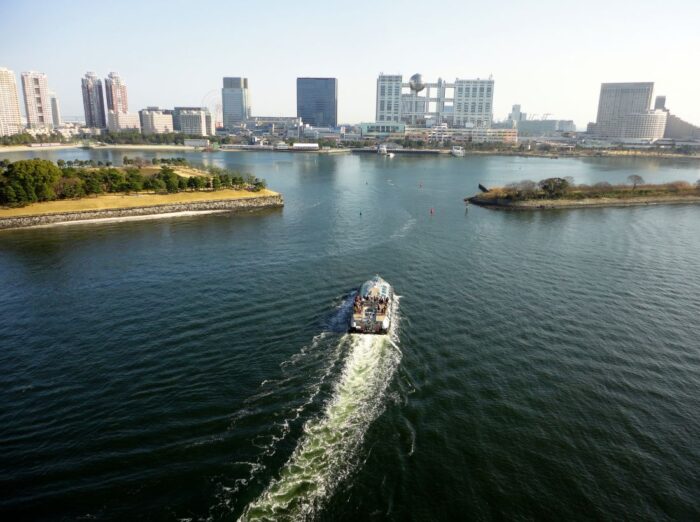
Rainbow Bridge is easily accessible by train, car, or on foot. The bridge spans Tokyo Bay, connecting the Shibaura and Odaiba districts. Here’s how to get there:
By Train
The closest train stations to Rainbow Bridge are Odaiba-Kaihinkoen Station (Yurikamome Line) and Shibaura-Futo Station (Yurikamome and Rinkai Lines). From either station, it’s a short walk to the bridge.
By Car
If you’re driving, there are several parking areas near Rainbow Bridge. The closest parking area is the Rainbow Bridge Parking Area, located on the Tokyo side of the bridge.
On Foot
Walking across Rainbow Bridge is a popular activity for both locals and tourists. The walkway is open 24 hours a day, and it takes about 20 to 30 minutes to cross the bridge on foot. There are observation areas along the way where you can stop and take in the breathtaking views of Tokyo Bay.
By Bicycle
Bicycles are not allowed on the main roadway of Rainbow Bridge, but there is a separate pedestrian and bicycle path that runs parallel to the bridge. If you’re looking for a unique way to experience the bridge, consider renting a bicycle and cycling across.
By Water
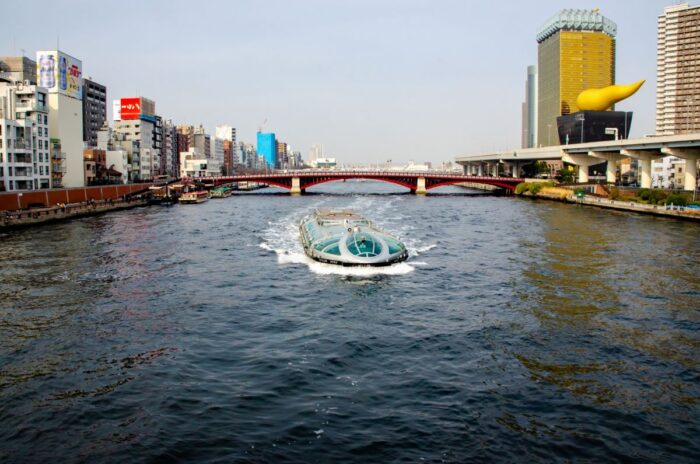
For a truly unique experience, take a water bus across Tokyo Bay to Rainbow Bridge. The water bus departs from Hinode Pier and takes about 15 minutes to reach the bridge. It’s a great way to see Tokyo from a different perspective.
Attractions and Activities

If you’re planning a visit to Tokyo, the Rainbow Bridge should definitely be on your itinerary. Not only is it a stunning piece of architecture, but it also offers incredible views of the city and the Tokyo Bay.
Walking across the bridge is a popular activity, but keep in mind that cycling is not allowed. The bridge is open from 9 a.m. to 9 p.m. during the summer months (April to October) and 10 a.m. to 6 p.m. during the winter months (November to March). However, it’s important to note that the walkways may be closed during strong winds or on the third Monday of the month.
For those who prefer to view the bridge from afar, there are plenty of spots in Tokyo where you can take in the beauty of the Rainbow Bridge. Odaiba Seaside Park and Shibaura are two popular areas where you can get a great view of the bridge.
If you’re interested in learning more about the history and significance of the Rainbow Bridge, be sure to visit the Museum of Maritime Science. This museum is located near the bridge and features exhibits on the history of Tokyo Bay and its importance to Japan’s economy and culture.
Another popular attraction near the Rainbow Bridge is the National Museum of Emerging Science and Innovation. This museum is located in Odaiba and features interactive exhibits on science and technology.
Finally, if you’re looking for a unique dining experience, head to Toyosu Fish Market. This market is located near the bridge and is known for its fresh seafood and sushi. It’s a great place to grab a bite to eat before or after your visit to the Rainbow Bridge.
The Sum Up

Visiting the Rainbow Bridge in Tokyo is an experience that you won’t forget. It’s a beautiful landmark that connects Odaiba to the rest of Tokyo. The bridge is especially stunning at night when the rainbow-colored solar-powered lights illuminate the structure.
Walking across the bridge is a unique way to experience the beauty of Tokyo Bay. You can enjoy the view of the city skyline while feeling the breeze off the water. It’s a great way to get some exercise and take in the sights at the same time.
It’s a symbol of the city’s modernization and innovation and the bridge has become a beloved landmark since its completion in 1993.
Details
| Information | Details |
|---|---|
| Name (English) | Rainbow Bridge |
| Name (Japanese) | レインボーブリッジ |
| Address | Minato City, Tokyo 105-0000, Japan |
| Ticket Cost | Free (walking on the pedestrian pathway) |
| Times | 24/7 (bridge); Pedestrian pathway: 9:00 AM – 9:00 PM (Apr-Sep), 10:00 AM – 6:00 PM (Oct-Mar) |
| Website | Japanese |
| Nearby Hotels | Luxury: |
| 1. Hilton Tokyo Odaiba (1.7 km) book | |
| 2. Grand Nikko Tokyo Daiba (1.4 km) book | |
| Mid-range: | |
| 1. Daiwa Roynet Hotel Tokyo Ariake (2.8 km) | |
| 2. Tokyo Bay Ariake Washington Hotel (2.9 km) | |
| Budget: | |
| 1. Oakwood Hotel & Apartments Ariake (2.6 km) | |
| 2. Hotel Trusty Tokyo Bayside (2.4 km) |
Where To Stay In Tokyo
Tokyo visitor levels are currently at an all-time high so make sure to book your hotels early. Tip most hotels booked with booking.com have free cancelation so book as soon as you know your date and you can always cancel if you change your mind.



